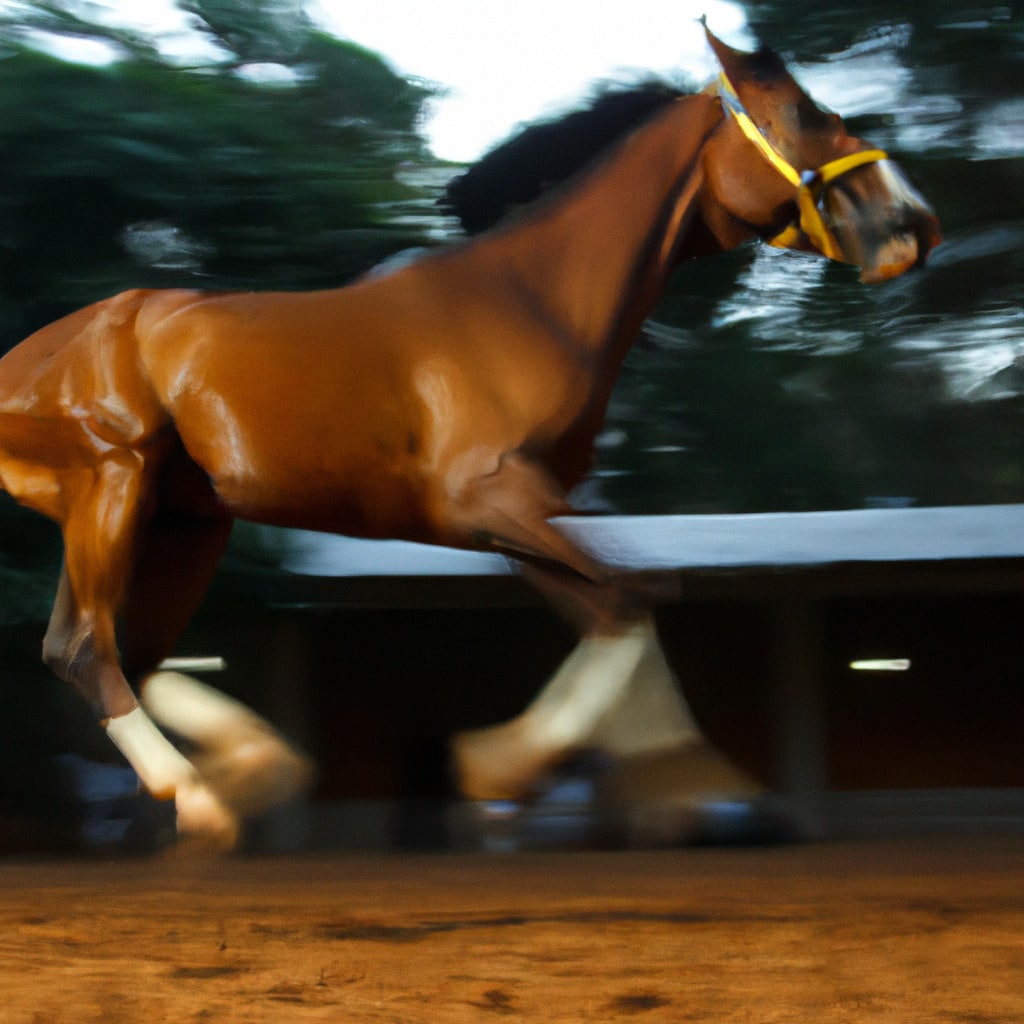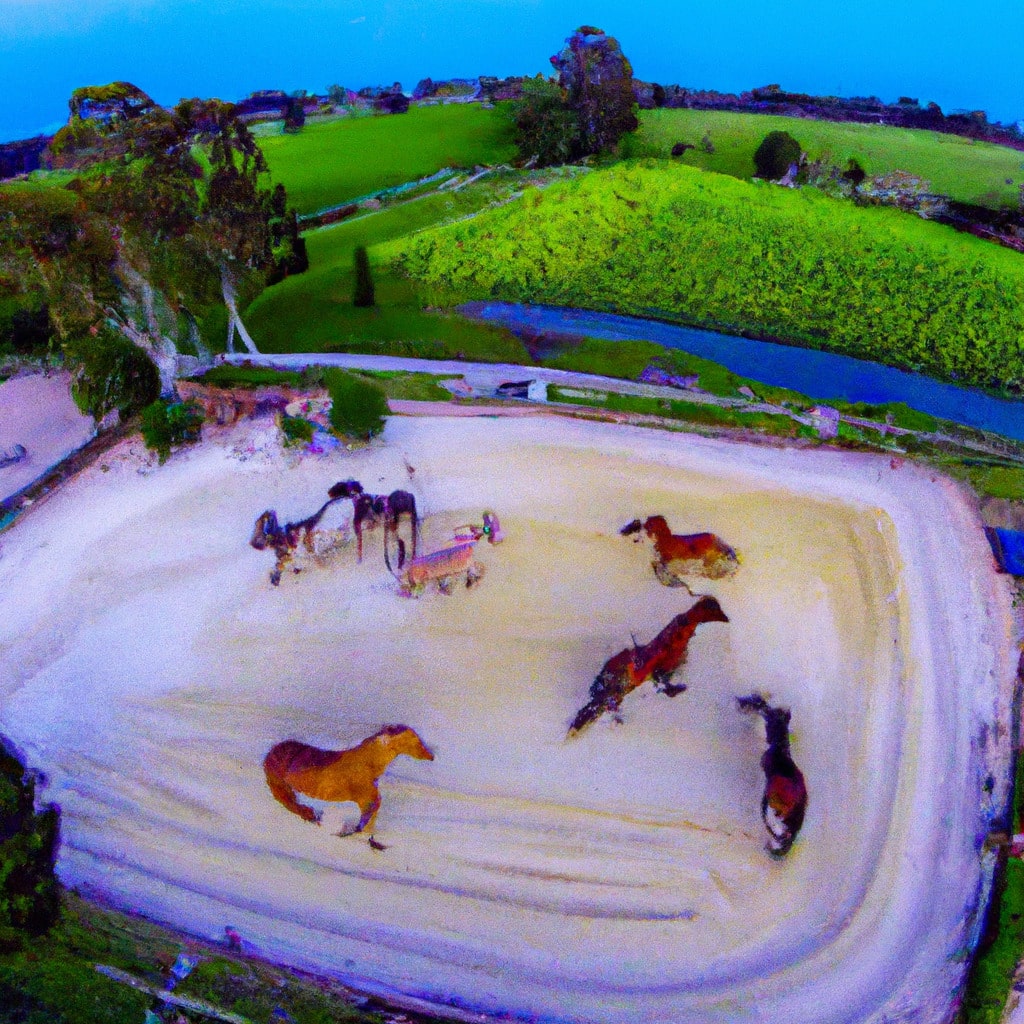Eventing: A Thrilling Journey of Horse and Rider
Eventing is an exhilarating equestrian sport that pushes the boundaries of horsemanship.
Combining the elegance of dressage, the daring of cross-country, and the precision of show jumping, eventing truly tests the versatility and athleticism of both horse and rider.
From the graceful movements of dressage to the adrenaline-fueled gallops over challenging cross-country obstacles, eventing captivates both participants and spectators alike.
In this article, we will explore the captivating world of eventing, delving into its rich history, the unique challenges it presents, and the remarkable bond between horse and rider.
So, fasten your seatbelts and get ready to embark on a thrilling journey into the realm of eventing!
The History of Eventing
Eventing, also known as horse trials, has a fascinating history that spans centuries. Originating from the military competitions held in the early 1900s, eventing has evolved into a thrilling and demanding equestrian sport that showcases the incredible partnership between horses and riders.
The roots of eventing can be traced back to the cavalry exercises of ancient times, where horse and rider demonstrated their skills in battle. These displays of horsemanship gradually transformed into organized competitions that tested the agility, obedience, and bravery of both horse and rider.
In the early 20th century, eventing as we know it today began to take shape. The sport was initially designed to evaluate the suitability of cavalry horses for military service. It consisted of three main phases: dressage, cross-country, and show jumping.
Dressage, the first phase of eventing, focuses on the precision and elegance of horse and rider. It showcases the harmony and communication between them through a series of intricate movements and transitions. The goal is to demonstrate the horse’s suppleness, obedience, and responsiveness to the rider’s aids.
The cross-country phase is the heart-pounding highlight of eventing. It tests the horse’s endurance, bravery, and agility as they navigate a challenging course with natural obstacles such as fences, ditches, and water crossings. The rider must make quick decisions, assessing the best approach to each obstacle while maintaining a steady pace.
The final phase, show jumping, requires precision and accuracy. The horse and rider must navigate a course of colorful fences, aiming to clear them without knocking down any rails. This phase tests the horse’s athleticism and the rider’s ability to maintain control and make split-second adjustments.
Eventing gained international recognition in the early 20th century and became an Olympic discipline in 1912. Since then, it has continued to grow in popularity and has become a true test of horsemanship and athleticism.
In recent years, eventing has seen advancements in safety measures to protect the welfare of both horses and riders. Course designers and organizers have implemented frangible technology, which allows certain obstacles to break away upon impact, reducing the risk of serious accidents. Additionally, safety regulations and guidelines ensure that participants have the necessary equipment and qualifications to compete safely.
Eventing is a sport that requires a deep bond between horse and rider. Hours of training and partnership development are essential to build trust and understanding. The horse must rely on the rider’s guidance, while the rider must have confidence in their horse’s abilities.

The Phases of Eventing
Eventing, often hailed as the ultimate test of horse and rider, is a captivating equestrian sport that encompasses three distinct phases: dressage, cross-country, and show jumping. Each phase presents its own set of challenges and requires a unique combination of skill, athleticism, and precision from both horse and rider.
The dressage phase, also known as the ‘ballet’ of eventing, showcases the horse’s elegance, obedience, and harmony with the rider. It is a display of precise movements and transitions, where the horse and rider communicate through subtle aids and cues.
Dressage tests are performed in a designated arena and are judged based on the horse’s suppleness, responsiveness, and correctness of movements. The aim is to achieve a seamless partnership, where the horse moves with grace and fluidity, responding willingly to the rider’s commands.
The cross-country phase is the heart-pounding highlight of eventing, where horse and rider tackle a challenging course set across varied terrain. It tests the horse’s bravery, stamina, and agility as they navigate solid obstacles, such as fences, water jumps, and ditches.
Cross-country courses are designed to simulate natural obstacles found in the countryside, requiring riders to make quick decisions on the best line and speed to approach each obstacle. It is a true test of the horse’s athleticism and the rider’s ability to think on their feet.
Safety is paramount in the cross-country phase, with organizers implementing measures to ensure the well-being of both horse and rider. Course designers carefully plan the layout and construction of obstacles, considering factors such as visibility, ground conditions, and the horse’s ability to safely negotiate each obstacle.
The final phase of eventing is show jumping, which takes place in an arena with a course of brightly colored fences. This phase tests the horse’s agility, accuracy, and obedience as they navigate a series of jumps without knocking down any rails.
Show jumping requires a combination of technical skill and precision from both horse and rider. The rider must maintain a steady rhythm and make quick decisions on the best approach to each jump, while the horse must demonstrate athleticism and the ability to adjust their stride.
Throughout each phase of eventing, penalties can be incurred for various reasons, such as knocking down fences, refusals, exceeding the time allowed, or errors in dressage movements. The horse and rider with the fewest penalties at the end of the competition emerge as the victors, highlighting the importance of consistency and accuracy across all three phases.
The Unique Challenges of Eventing
Eventing, often hailed as the ultimate test of horse and rider, presents a myriad of unique challenges that require a combination of skill, athleticism, and mental fortitude. From the precision and finesse demanded in dressage to the stamina and bravery required in cross-country, eventing pushes participants to their limits and rewards those who rise to the occasion.
One of the key challenges in eventing is the ability to excel in multiple disciplines. Horses and riders must be proficient in dressage, where they showcase their elegance and obedience through a series of precise movements. They must then transition to the adrenaline-fueled cross-country phase, where they navigate challenging obstacles over varied terrain. Finally, they must demonstrate their agility and accuracy in the show jumping phase.
The versatility required in eventing is what sets it apart from other equestrian sports. Horses must possess the athleticism and trainability to excel in all three phases, while riders must have the skill and adaptability to guide their horses through each challenge. It is a true test of the partnership and communication between horse and rider.
Another challenge in eventing is the mental fortitude required to compete at the highest level. Riders must make split-second decisions on the cross-country course, assessing the best line and speed to approach each obstacle. They must remain focused and composed under pressure, trusting their training and instincts.
The physical demands of eventing cannot be underestimated. Horses must possess the strength and stamina to gallop over long distances and jump solid obstacles. Riders must have the fitness and balance to maintain control and communicate effectively with their horses. Both horse and rider must be in peak physical condition to tackle the challenges of eventing.
Course design is another aspect that adds to the complexity of eventing. Course designers aim to create a challenging yet fair course that tests the skills of both horse and rider. They must consider factors such as the terrain, the technicality of the obstacles, and the overall flow of the course. A well-designed course will reward skill and accuracy while ensuring the safety of all participants.
Weather conditions can also play a significant role in eventing. Competitions can take place in various climates and seasons, and riders must be prepared to adapt to different ground conditions and weather patterns. Rain, heat, or cold can impact the footing and the overall difficulty of the course, adding an additional layer of challenge to the sport.
Eventing is a sport that requires dedication, perseverance, and a deep bond between horse and rider. The hours of training, the countless hours spent in the saddle, and the trust built between horse and rider are all integral to success in eventing. It is a sport that demands a lifelong commitment to continuous improvement and growth.
In conclusion, eventing is a captivating equestrian sport that truly tests the partnership and abilities of both horse and rider. From the precision and elegance of dressage to the adrenaline-fueled cross-country phase and the technicality of show jumping, eventing encompasses a wide range of skills and challenges. It requires a deep bond between horse and rider, as well as dedication, perseverance, and a lifelong commitment to continuous improvement.
Throughout its rich history, eventing has evolved and adapted to ensure the safety and welfare of both horses and riders. Advances in technology, course design, and safety measures have made eventing a safer and more accessible sport, while still maintaining its thrilling and demanding nature.
Eventing competitions bring together riders from all walks of life, from amateur enthusiasts to elite professionals. It is a sport that fosters camaraderie and sportsmanship, as riders support and encourage one another in their pursuit of excellence. The sense of accomplishment and fulfillment that comes from successfully completing an eventing competition is unparalleled.
As eventing continues to grow in popularity, it is important to recognize the incredible athleticism and dedication of both horses and riders. The bond between horse and rider is truly remarkable, built on trust, communication, and countless hours of training. Eventing showcases the beauty and power of these magnificent animals, as well as the skill and horsemanship of their riders.
Eventing is not just a sport, but a way of life. It teaches us the value of hard work, perseverance, and the importance of building strong partnerships. The challenges faced in eventing not only test our physical abilities but also our mental strength and resilience.
Whether you are a rider, a spectator, or simply an admirer of horses, eventing offers a thrilling and awe-inspiring experience. It is a sport that captures the imagination and leaves a lasting impression on all who witness it. The thrill of watching a horse and rider conquer a challenging cross-country course, the elegance of a dressage performance, and the excitement of a flawless show jumping round are moments that stay with you forever.
So, are you ready to experience the thrill and challenge of eventing? Will you be the next rider to embark on this incredible journey? Whether you are a seasoned competitor or a beginner, eventing offers a world of excitement, camaraderie, and personal growth. It is a sport that pushes boundaries, breaks barriers, and celebrates the incredible bond between humans and horses. So, saddle up and join the ranks of eventers around the world. The journey awaits!
So, are you ready to experience the thrill and challenge of eventing? Will you be the next rider to embark on this incredible journey?


